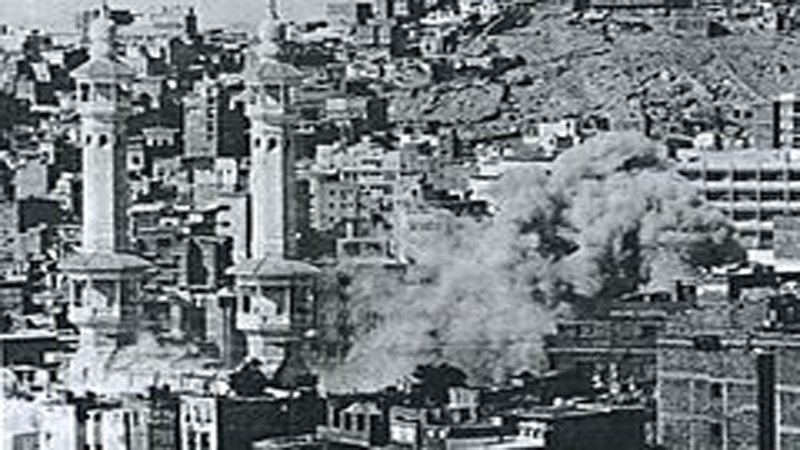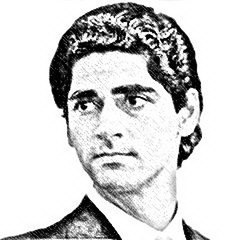It’s hard to believe but on Nov 20th, thirty-eight years ago, Juhayman al-Otaybi and his army of fanatics began seized the Holy Ka’bah. Hundreds of pilgrims were taken hostage. For the first time in centuries prayers and tawaaf, the circumambulation of the Ka’bah, stopped. Instead, the house of God was turned into a bloody battlefield where up to a thousand people perished. It was on this day the modern world was first introduced to radical Islamic terrorism.
Juhayman was a Bedouin from Najd in the central highlands of Saudi Arabia. Here, the theologian Ibn Abdel Wahhab’s ultra-conservative ideology first took root in the mid 1700s. Wahhab was outraged by the liberal culture of the Islamic civilisation under Ottoman leadership. He preached with great pride the superiority of the desert-nomads’ simple customs. His orthodox gospel spread and eventually his fiery followers launched armed campaigns to enforce their ‘Wahhabi’ ideology on others.
In 1802, a force of Wahhabi warriors led by a local chieftain Mohammad Al-Saud invaded the Shiite city of Karbala, which at the time was ruled by the Ottoman Empire. Since the Wahhabi ideologues were indoctrinated to loath Shiites, thousands were mercilessly murdered. The entire city was ransacked then set ablaze. Some accounts claim up to 4,000 camels were used to carry the plunder back to Najd.
In 1802, a force of Wahhabi warriors ledby local chieftain Mohammad Al-Saud invaded
the Shia city of Karbala, which at the time was ruled by the Ottomans. Since the Wahhabi ideologues were indoctrinated to loath Shias, thousands were mercilessly murdered
A year later, Al-Saud’s camel-riding cavalry arrived outside the gates of Mecca. Well aware of the Karbala massacre, the Meccans chose to surrender without a fight. Medina soon followed suit. The ‘impure’ ways of the cities were immediately rectified and aligned with Wahhabi beliefs. Tobacco was banned, all smoking paraphernalia burned, and mausoleums grazed. Not even the Prophet’s (PBUH) grave was spared. A decade and a half later, Ottoman forces finally defeated Al-Saud and the Wahhabis. Their capital was demolished. Al-Saud was transported to Istanbul in a cage and executed amidst ‘cheer and fireworks’.
In 1902, another Al-Saud scion — Abdul Aziz — began his conquest of what would soon become his Kingdom of Saudi Arabia. Abdul Aziz initially seized Riyadh and then moved west towards Najd. After a series of victories, he controlled a territory the size of eastern United States. The conquered tribes of this new empire were forced to adopt the strict practices of Wahhabism. Those who didn’t adhere weren’t extended any courtesies. At worst they were killed, at best robbed. Therein lies the most dangerous characteristic of Wahhabis — their ruthless intolerance for those that don’t conform to their version of Islam.
Fanatics of this sect continued to raid and harass non-Wahhabi neighbours and pilgrims, and eventually ended up openly rebelling against their chief patron the King. With the help of British bombers and machine guns the Saudi King defeated their makeshift army. The remaining rebels were adjusted into the King’s personal force — The National Guard.
A few decades later The National Guard enlisted a descendant of those rebels, a man named Juhayman. The National Guard was a lax organisation giving Juhayman ample time to pursue his Wahhabi-centric religious studies. Just as the Wahhabis were outraged by the liberal attitudes during the Ottoman times, he too was outraged by the modernisation that petroleum dollars were funding in Saudi Arabia. There were shopping malls, music and most shockingly women on television.
By 1979, Juhayman decided to act. He used his vast tribal, religious and National Guard network to secure a cult-like following that would go on to inflict unthinkable carnage inside the Ka’bah. He wanted a revolution; instead he got a two-week battle that resulted in hundreds of deaths. Afterwards, the captured culprits including Juhayman were publicly executed.
After the siege, the Islamic world was in a state of shock. That shock turned to anger, which was misdirected at the Muslim world’s favourite scapegoat — the West. Instead of taking a good hard look at the crux of the problem, American embassies all around the Muslim world were attacked by mobs. Even the embassy in Islamabad was torched resulting in six deaths. Anti-American sentiments became so high that the Soviets saw this as a perfect opportunity to invade Afghanistan.

Instead of tackling extremism, the Saudi leadership used the Soviet invasion to encourage zealots to fight the ‘infidels’ in Afghanistan. Better there than here, they must have thought. Instead of moderating Wahhabi demands, they conceded to them; For example, women were banned from working, dress codes were enforced, and alcohol was next to impossible to procure. Wahhabi institutions were appeased with funds and missionaries began to export their radical gospel to the world. Al Qaeda, Taliban, and ISIS were some of the groups they would inspire.
The Mecca catastrophe should have resulted in major introspection by the Sauds regarding their historic patronage of Wahhabis. Unfortunately they’re two heads of the same Hydra monster with intertwining fates. The Ka’bah incident should have been a warning of the dangers to come, but instead it was dismissed as an isolated incident from a bygone era. It remains to be seen how Wahhabi segments in Saudi Arabia will react to the current Crown Prince’s ambitious reforms. They say if history doesn’t repeat, it’ll at least rhyme.
The writer is an agriculturist with degrees in Economics and Mass Communication. He can be reached at Skhanzada@ymail.com
Published in Daily Times, November 21st 2017.
